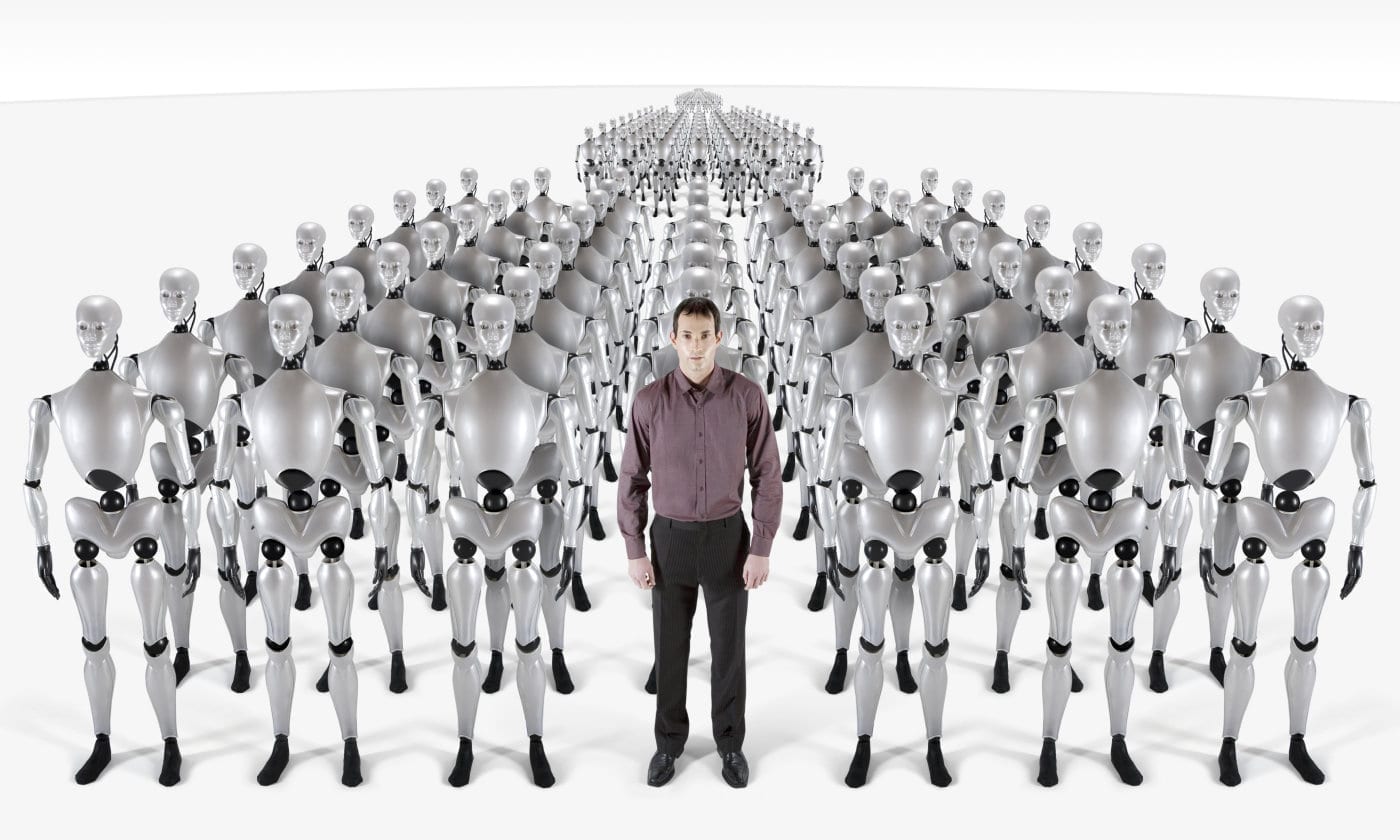Donald Trump has been talking a lot about American jobs – specifically manufacturing jobs – and how we can bring them back. But where have those jobs gone? And can we get them back?
The US has lost 5 million manufacturing jobs since 2000. That leaves about 12 million jobs in this sector. Trump and other politicians say the loss of jobs is due to outsourcing to China, with its cheap and available labor force. But that’s only part of the story. Technology has replaced many of these jobs, and those won’t come back. This makes it difficult to re-skill many former manufacturing workers which leaves them at the mercy of unemployment benefits, which differ from state to state.
The reasons for replacing human workers with robots are many. Once you get past the initial outlay to design and purchase the robots, they are much less expensive than humans. They don’t take sick days, drink at lunch time, or complain about the boss. If they get ‘injured’ on the job, they can just be replaced. They are more accurate and often faster than humans, and they don’t get bored doing the same task over and over.
There are legal issues involved in the use of robots in manufacturing, however. The use of machines to replace human workers brings up a variety of liability, health and safety, data security, and employment law issues.
Liability
When robots are used in manufacturing to the exclusion of human workers, the liability waters may be muddied. In a typical manufacturing job, a human worker would use machinery to make a product. If something went wrong with the machinery, it was typically easily traced to either a defect in the machine or operator error. Further, the operator could shed some light on the problem – how it was detected, what happened immediately before, and so on.
In an all-robotic manufacturing situation, a malfunction could have numerous causes. It could be related to the hardware or the software involved, or the communication between these systems. The liability could fall on the manufacturer of any of the robot’s parts. The robot may be programmed to report on itself, but that reporting capability could also fail, leaving the manufacturer with little information on the cause or scope of the problem. Assigning liability for a malfunction that causes damage or injury could get complicated.
Editor’s note: Liability, in this case, refers to finding the source of the problem, not necessarily legal liability. Legal liability does rely upon tracing the cause of the problem, of course. In the legal sense, liability for damages or injuries to customers still resides with the product manufacturer and possibly the manufacturer of the robotic system that caused the damages or injuries.
Health and Safety
The use of robots in the same area as humans presents a possible health and safety risk in the event of a malfunction. The interaction of human workers with robots and other technology needs to be carefully monitored to ensure health and safety at all times.

Data Security
As more and more functions are carried out by robots, they will need to gather more and more information about employees, customers, suppliers, and so forth. The use of cameras, sensors, and microphones, and the information they collect may be included under state protection statutes. The appropriate privacy rules will need to be applied.
Employment Law
As robots become more widely used, they will continue to replace human workers in manufacturing operations. While it is unlikely that this will produce mass unemployment in a short period, there are likely to be layoffs that will need to be handled appropriately. A company that replaces workers with machines will need to be certain to follow all applicable employment laws about notice, severance, retraining and other obligations.
The present administration has been indicating that it may take action against companies that send jobs overseas, so it is well within the realm of possibility that there could be sanctions against companies that replace human jobs with technology. This is something that companies must consider as well.
The use of robots in manufacturing will continue – the cost and production efficiencies far outweigh the risks. But these risks must be addressed and new regulations enacted to protect companies and human workers alike.


Join the conversation!